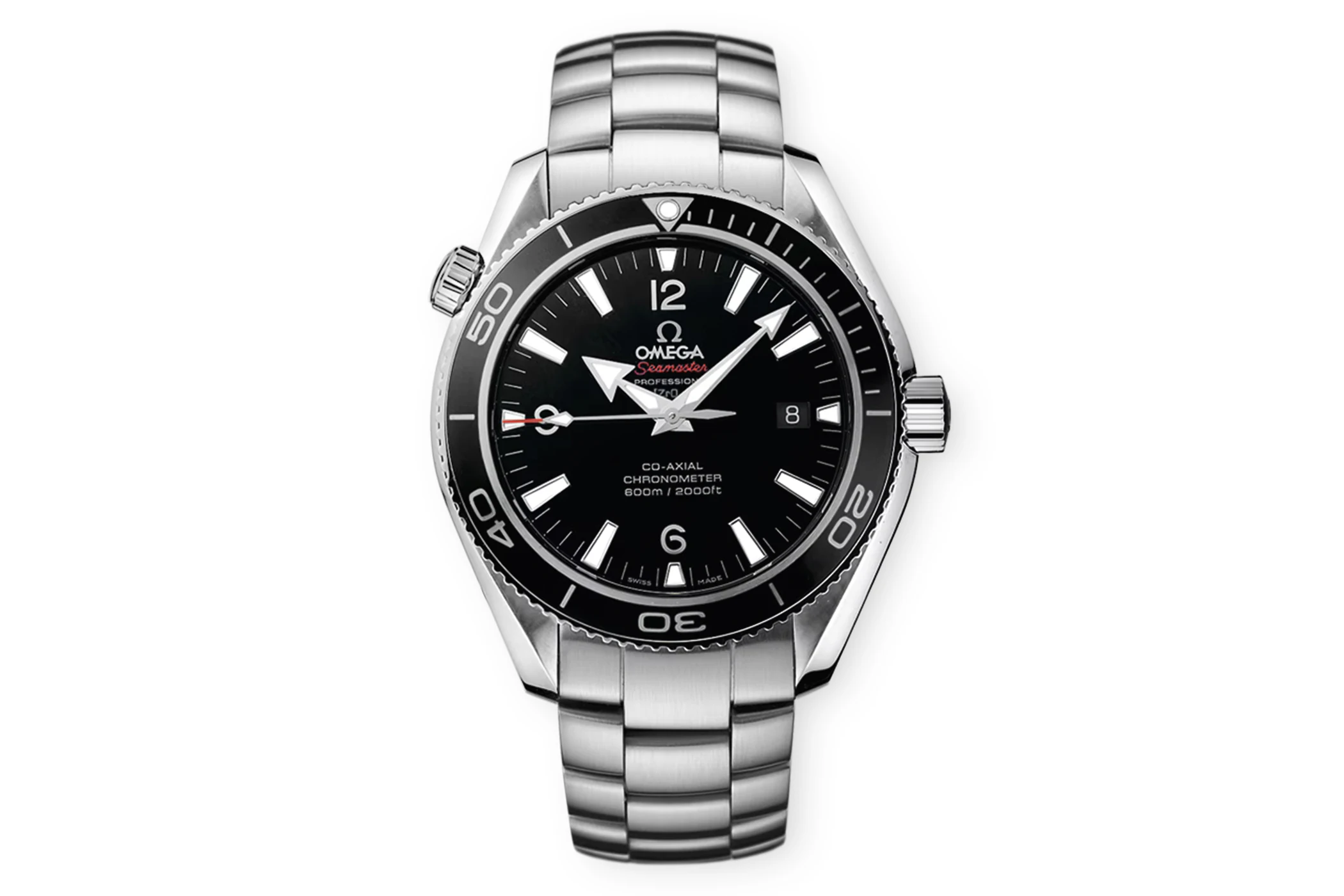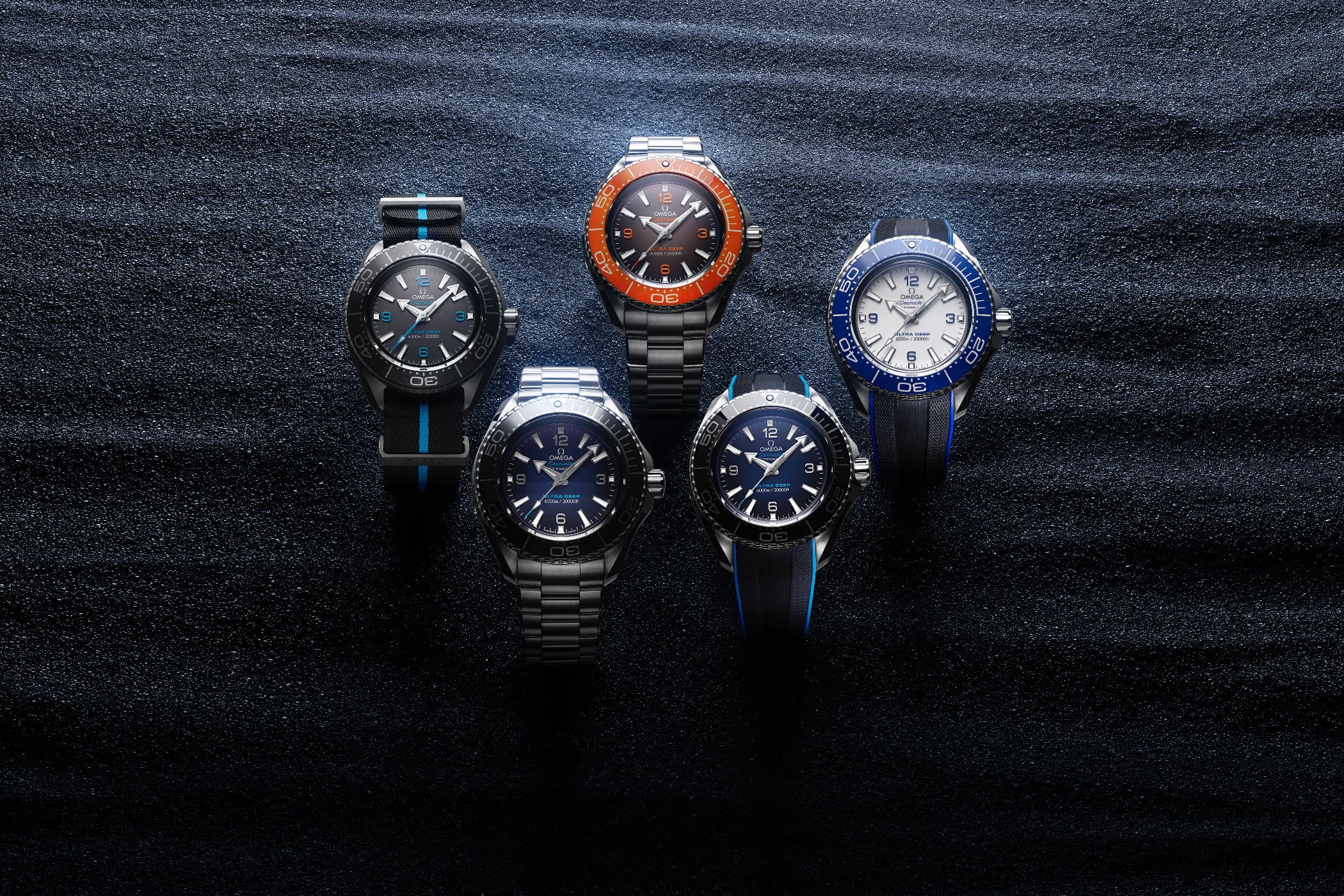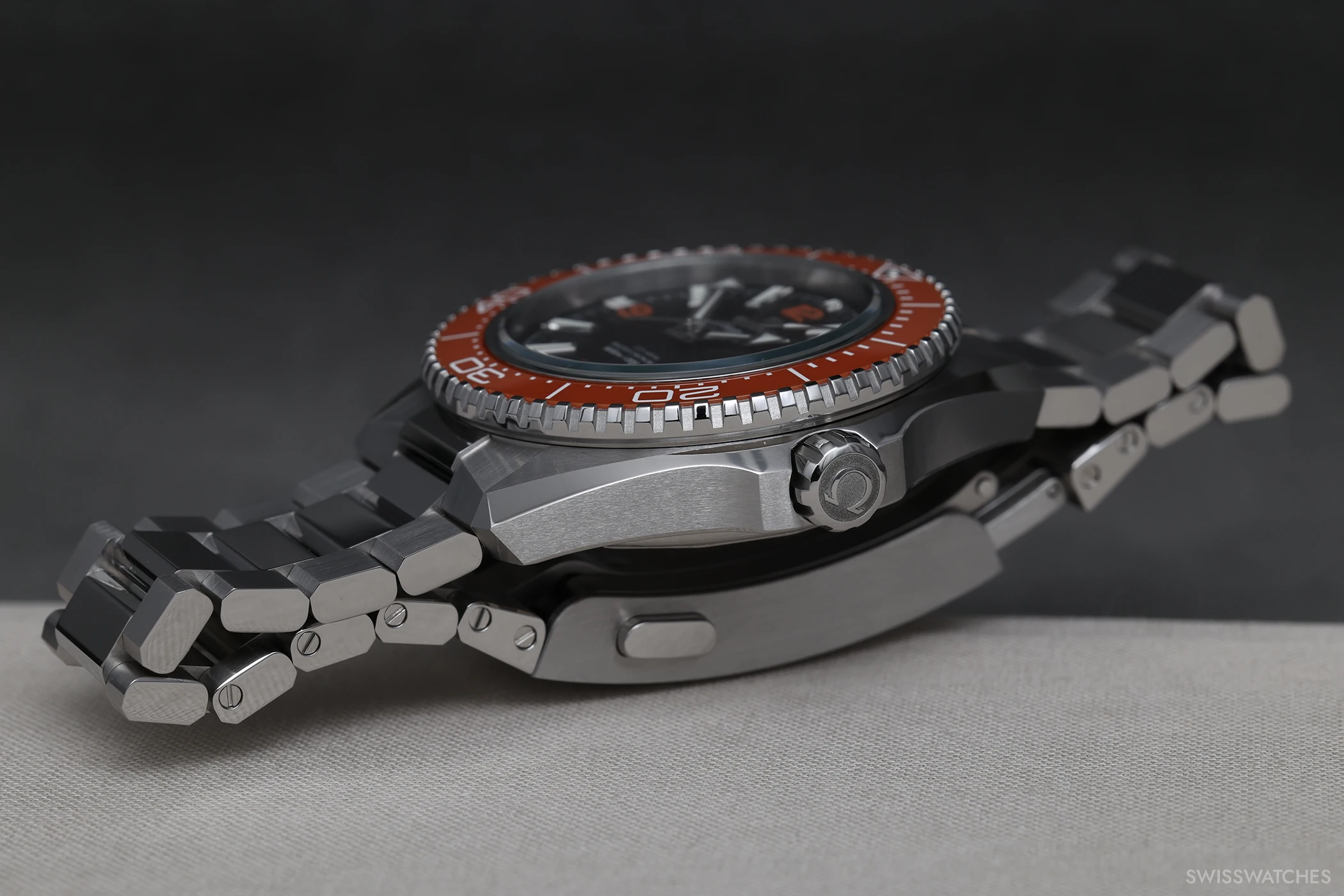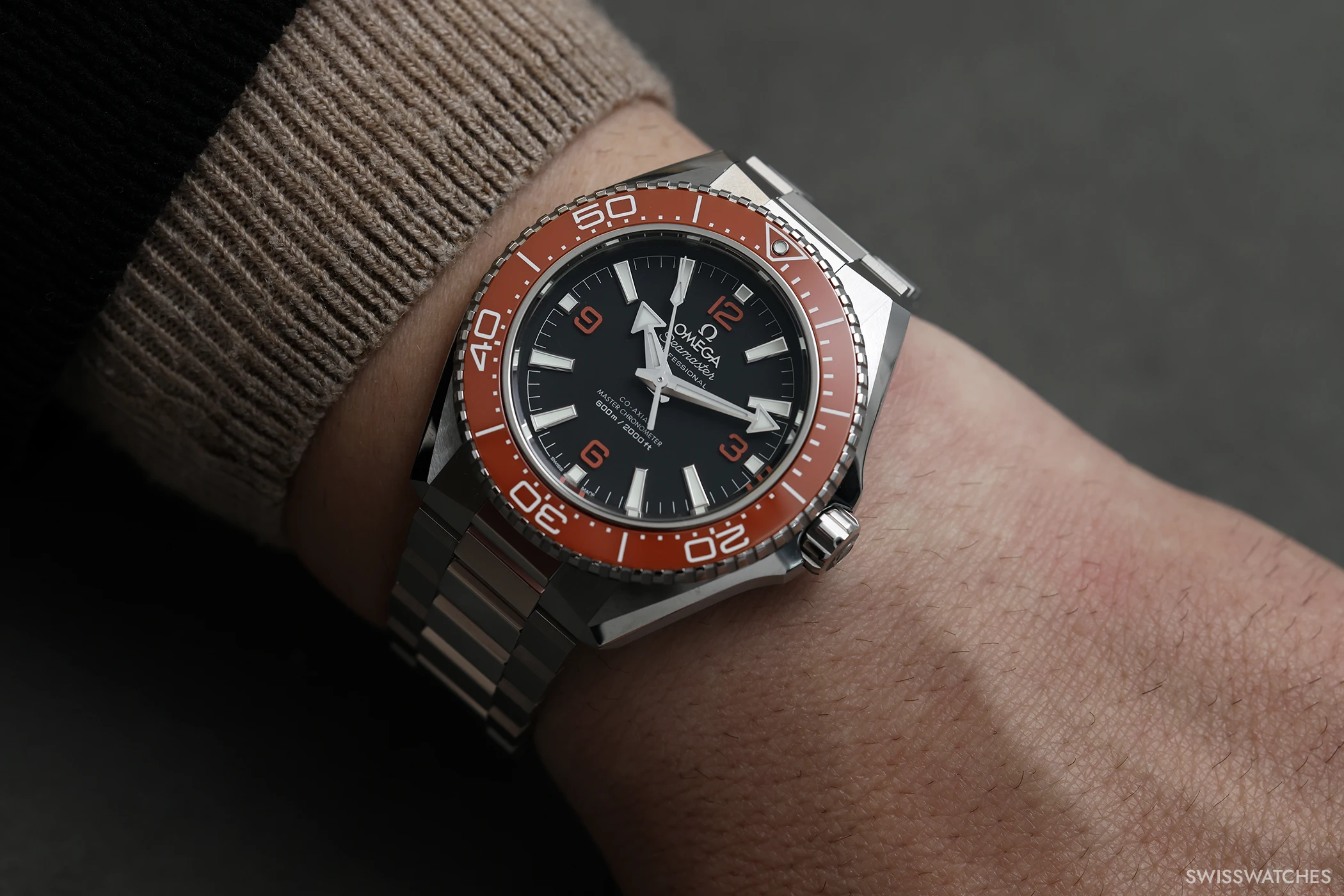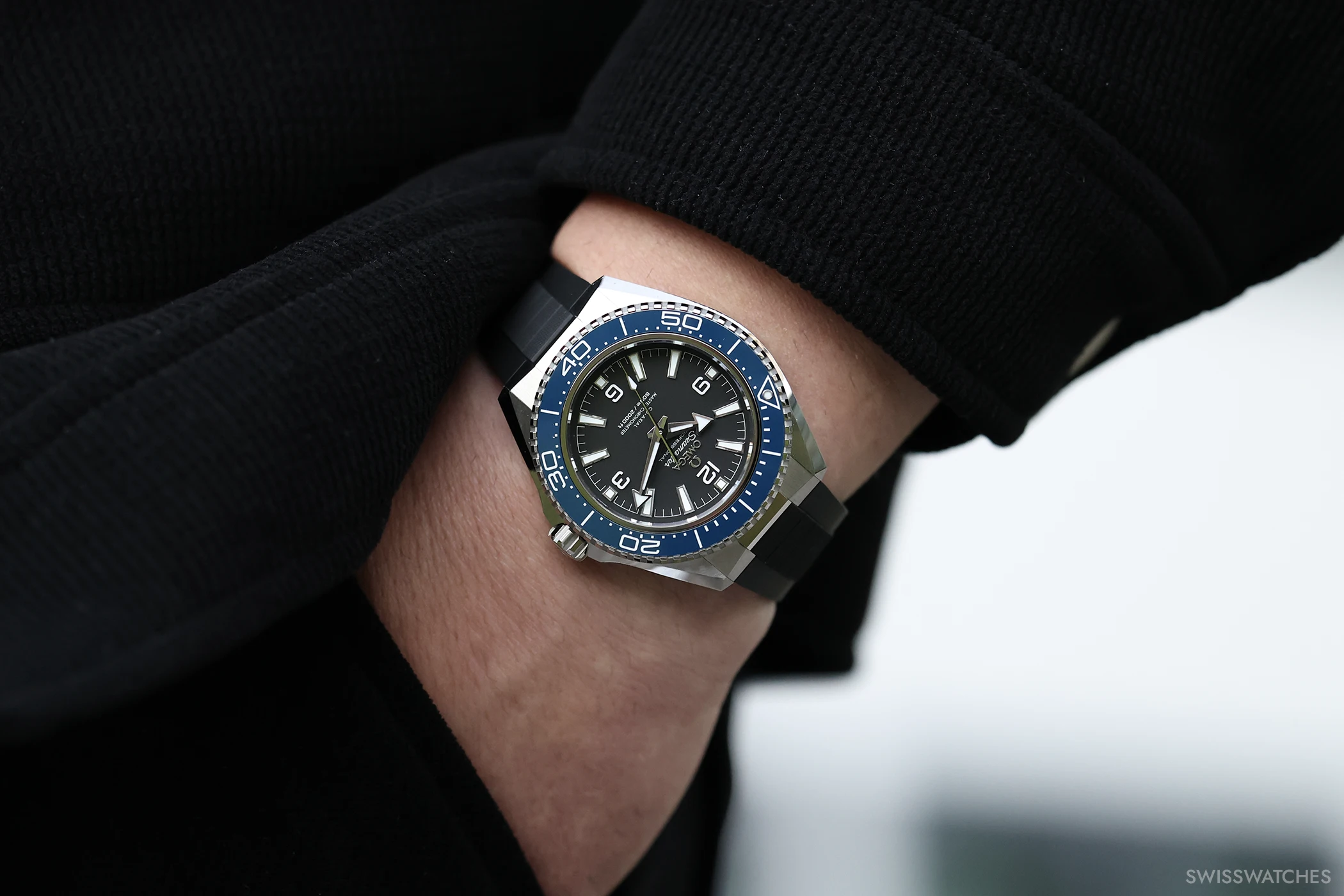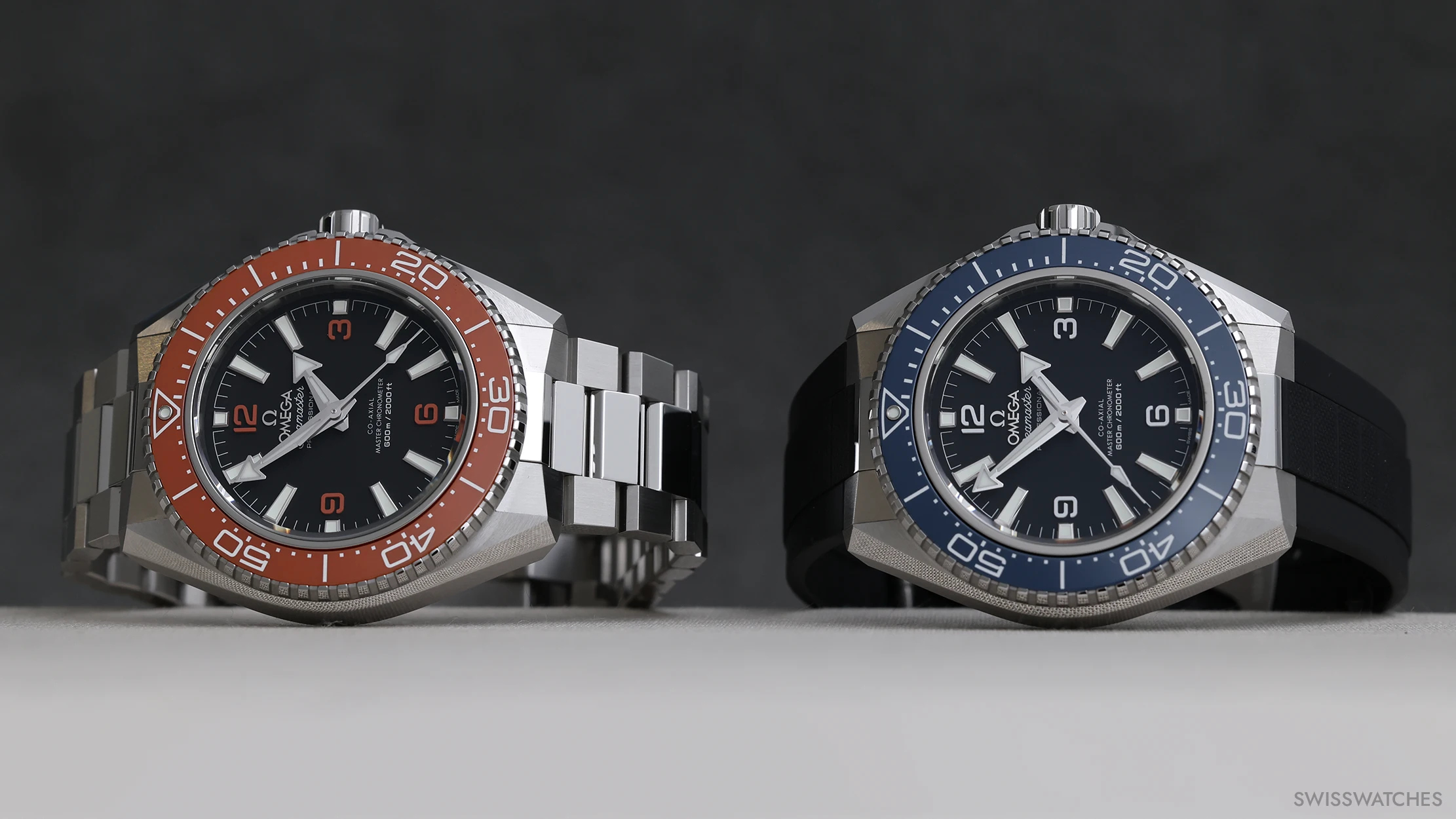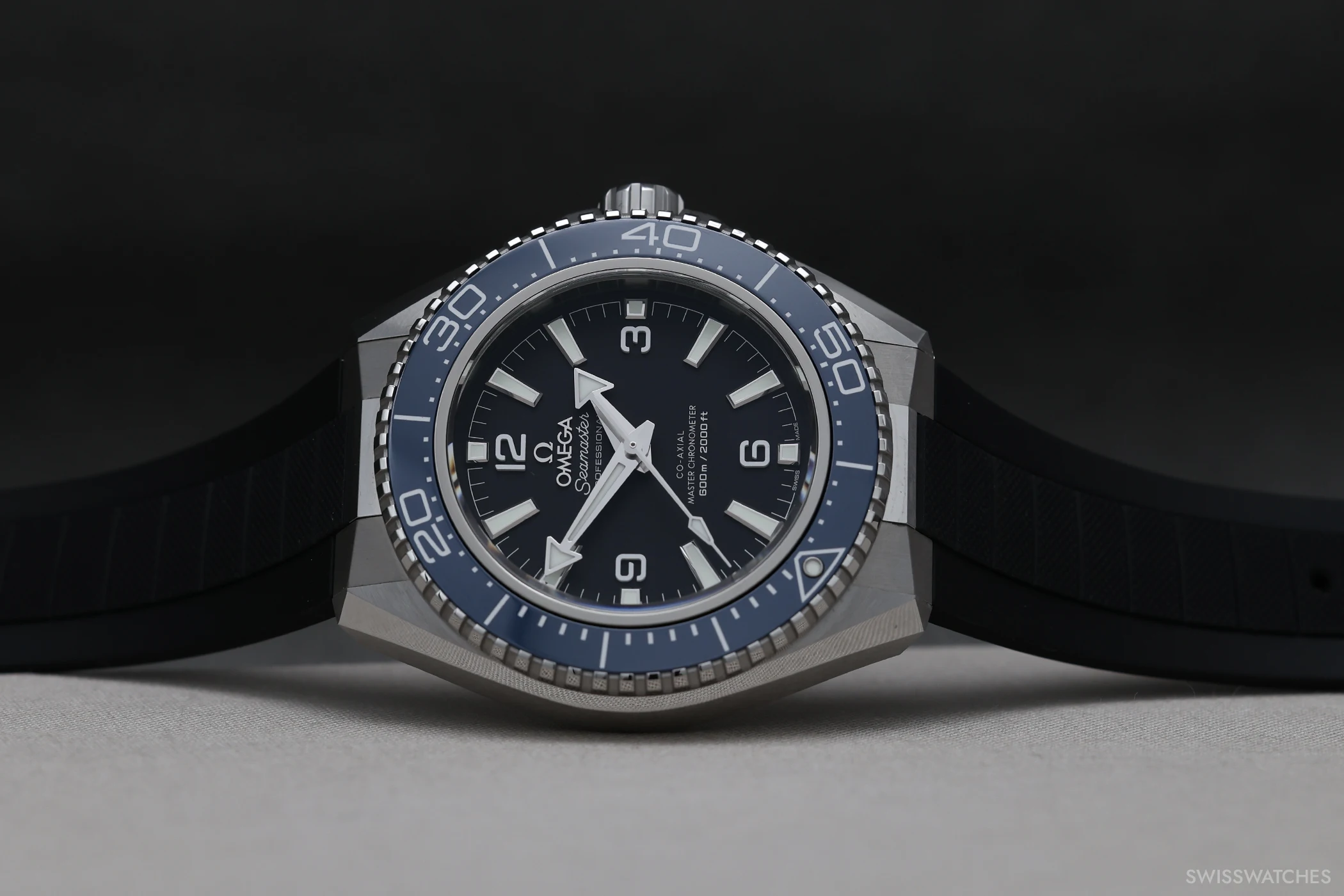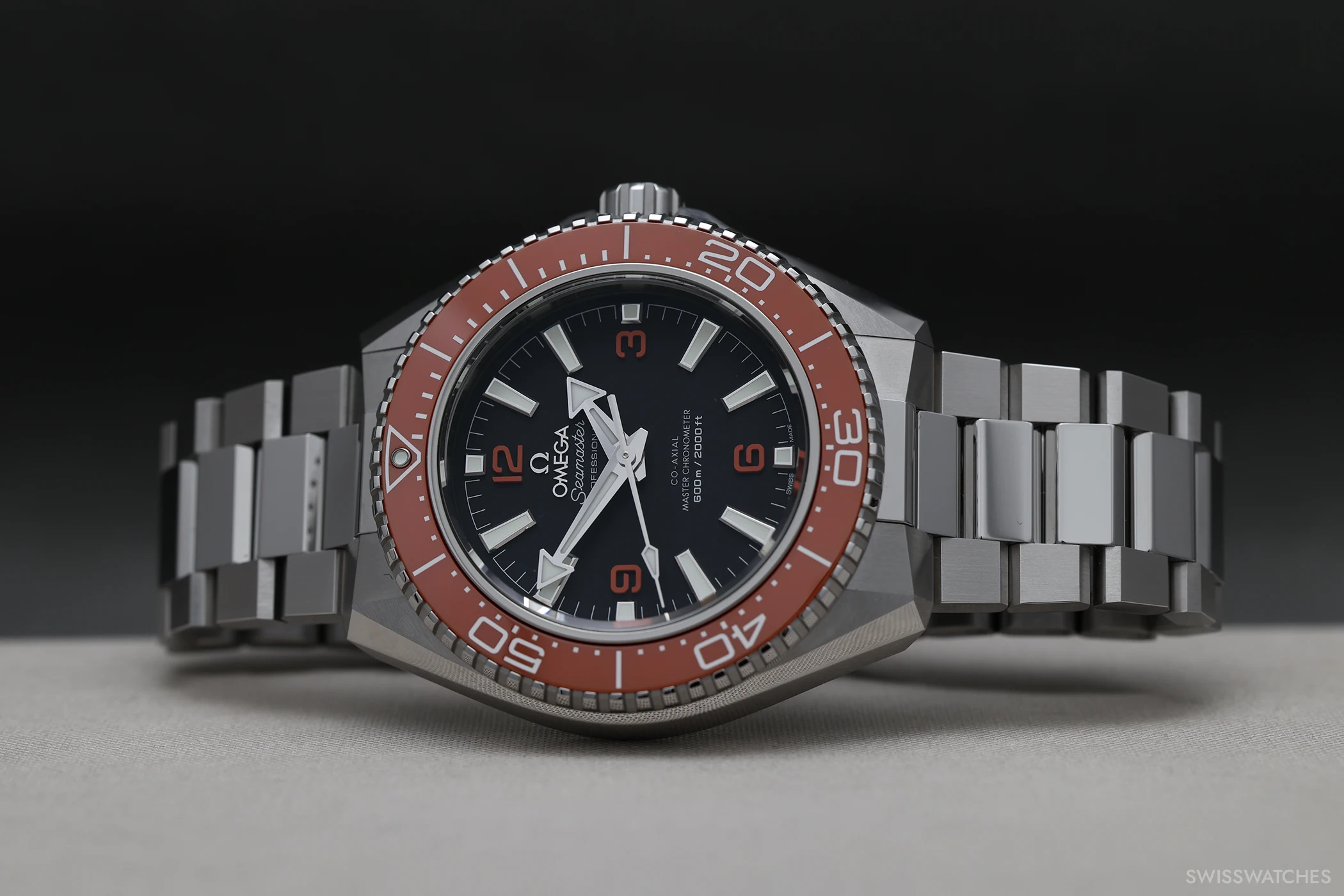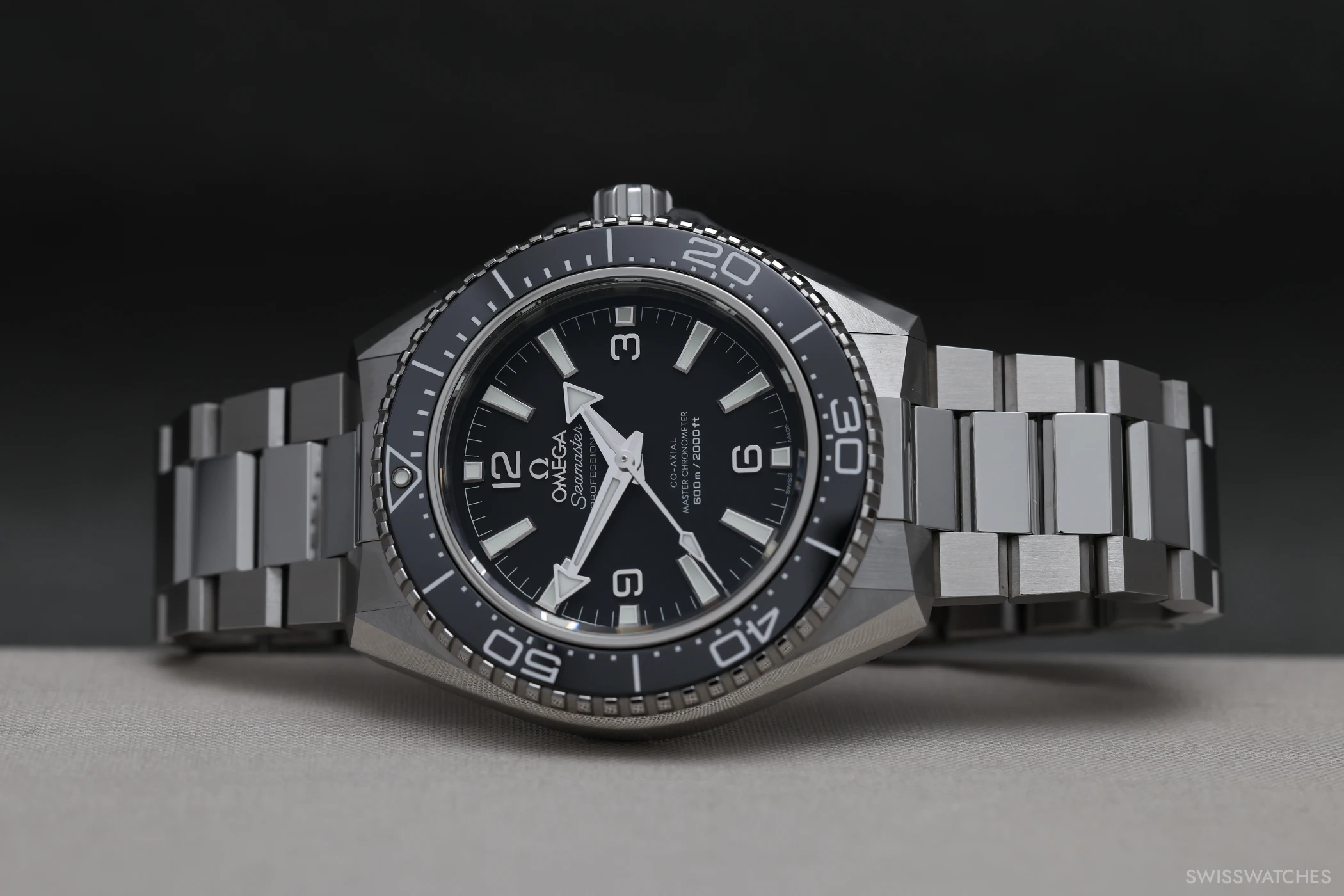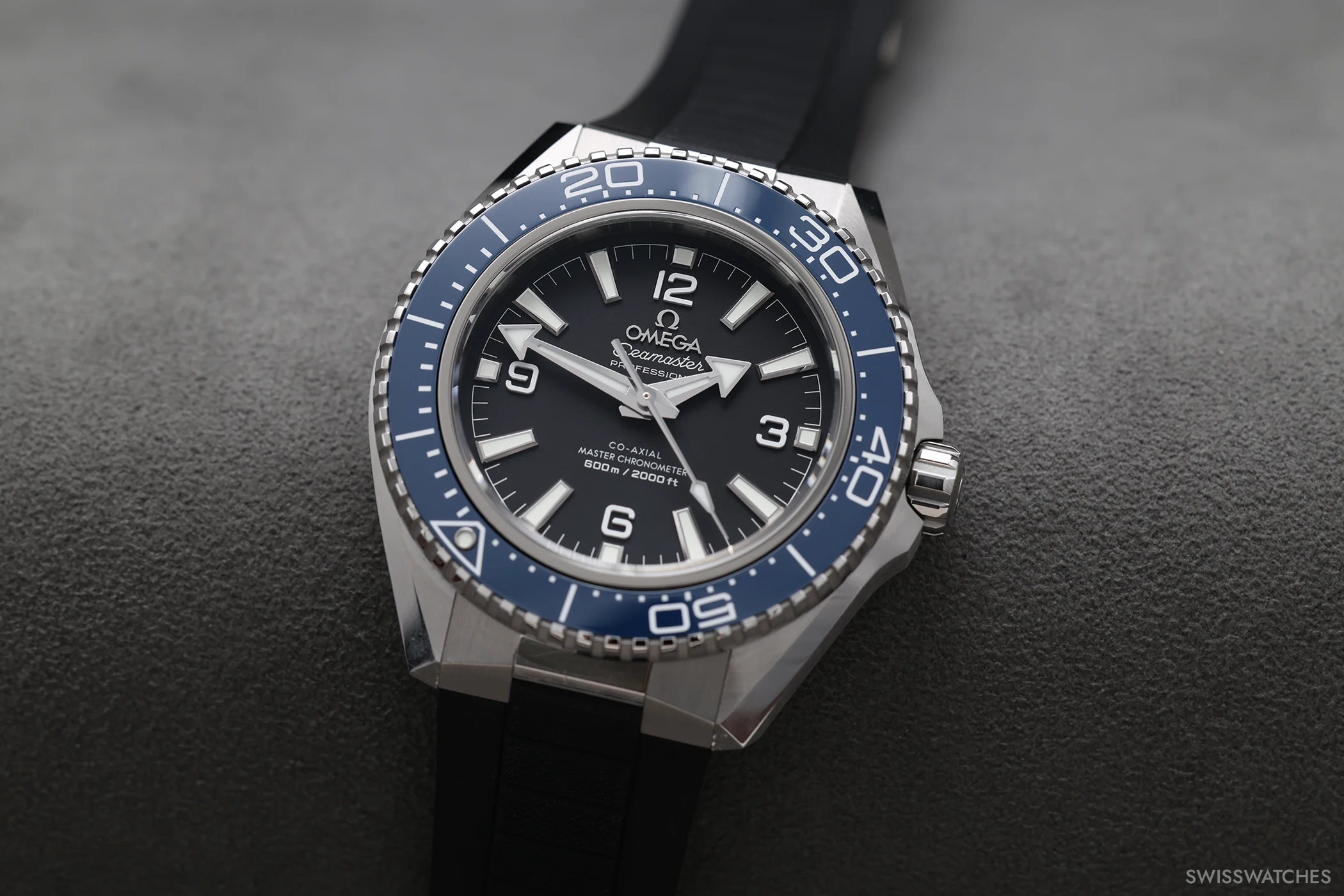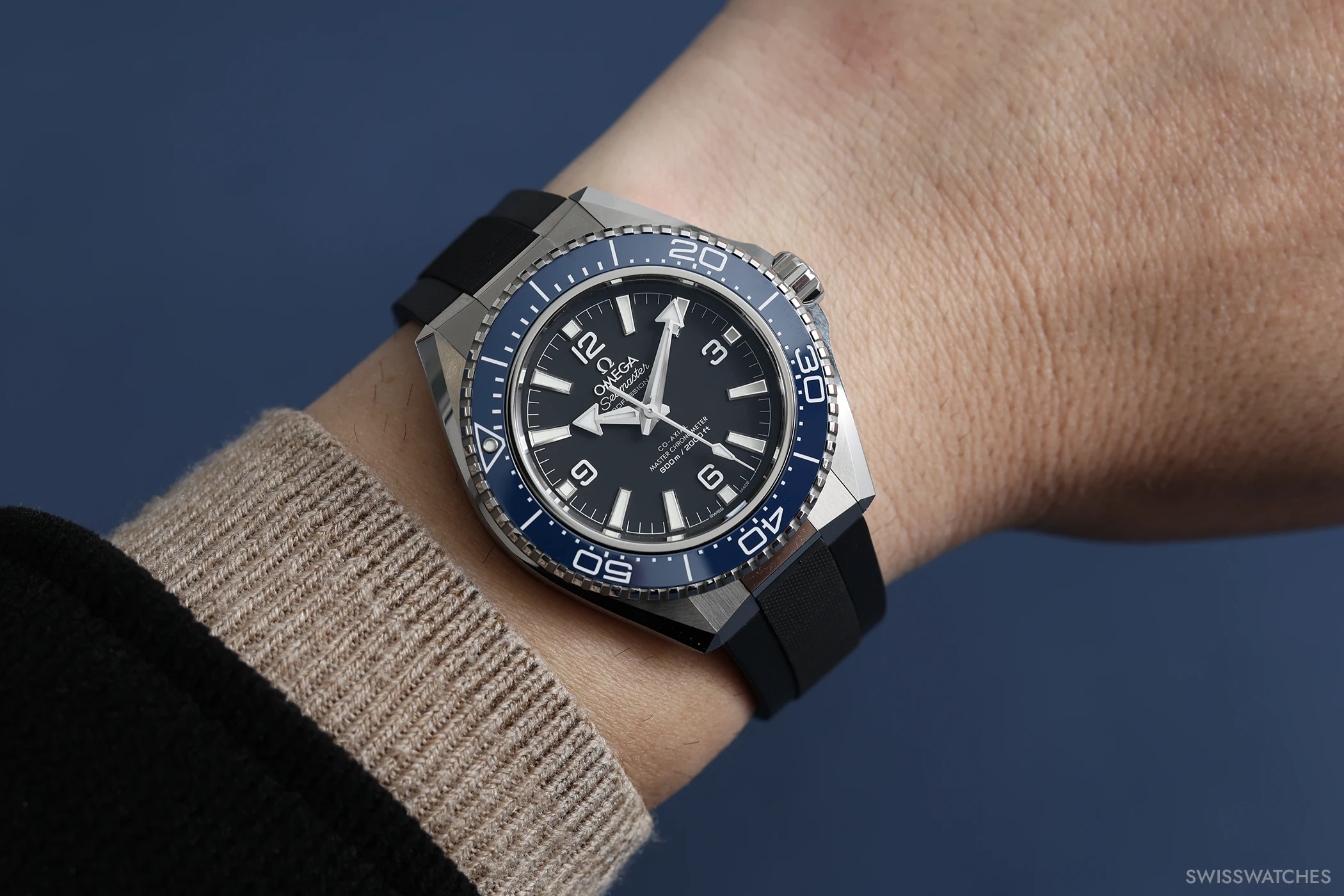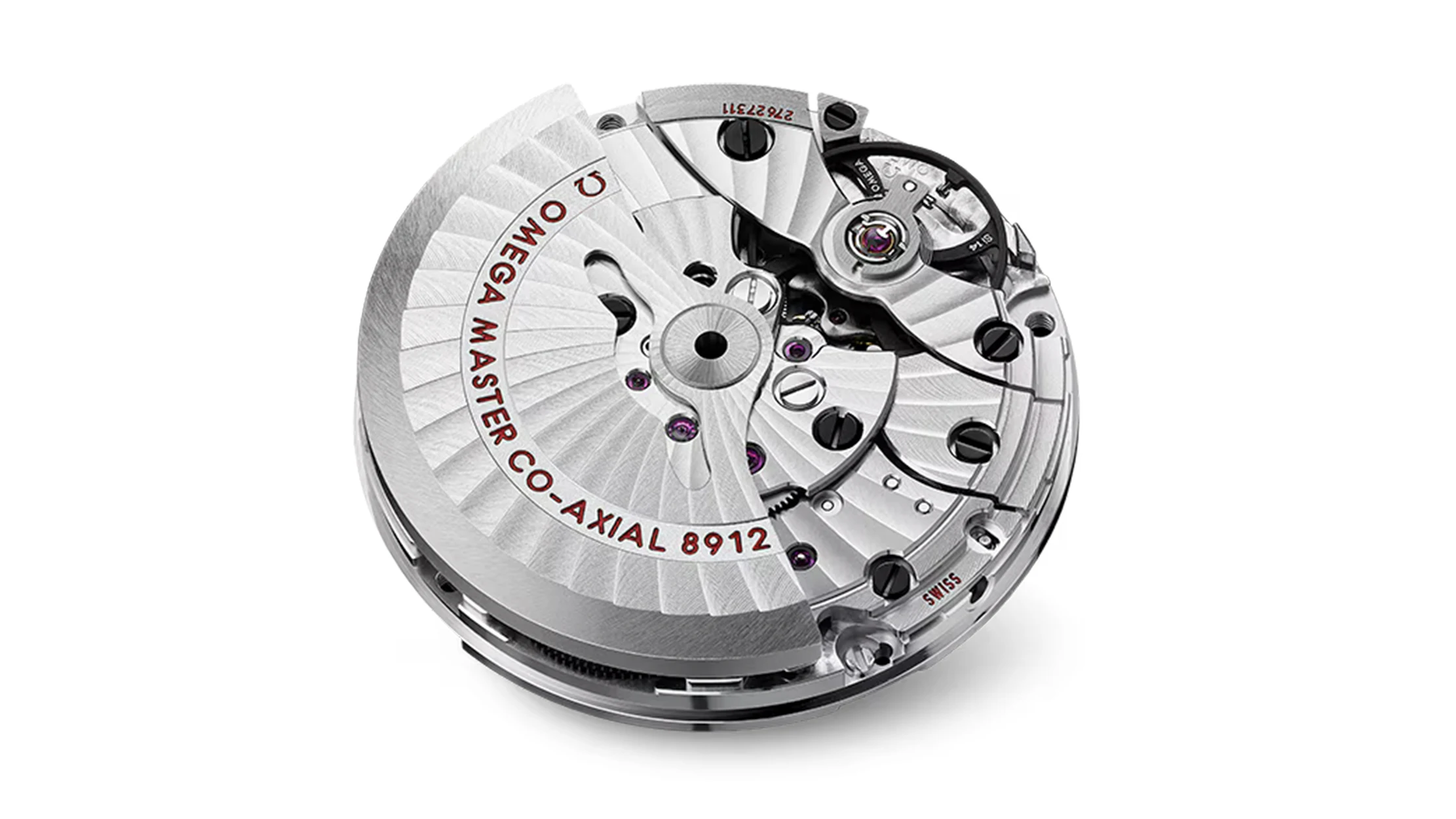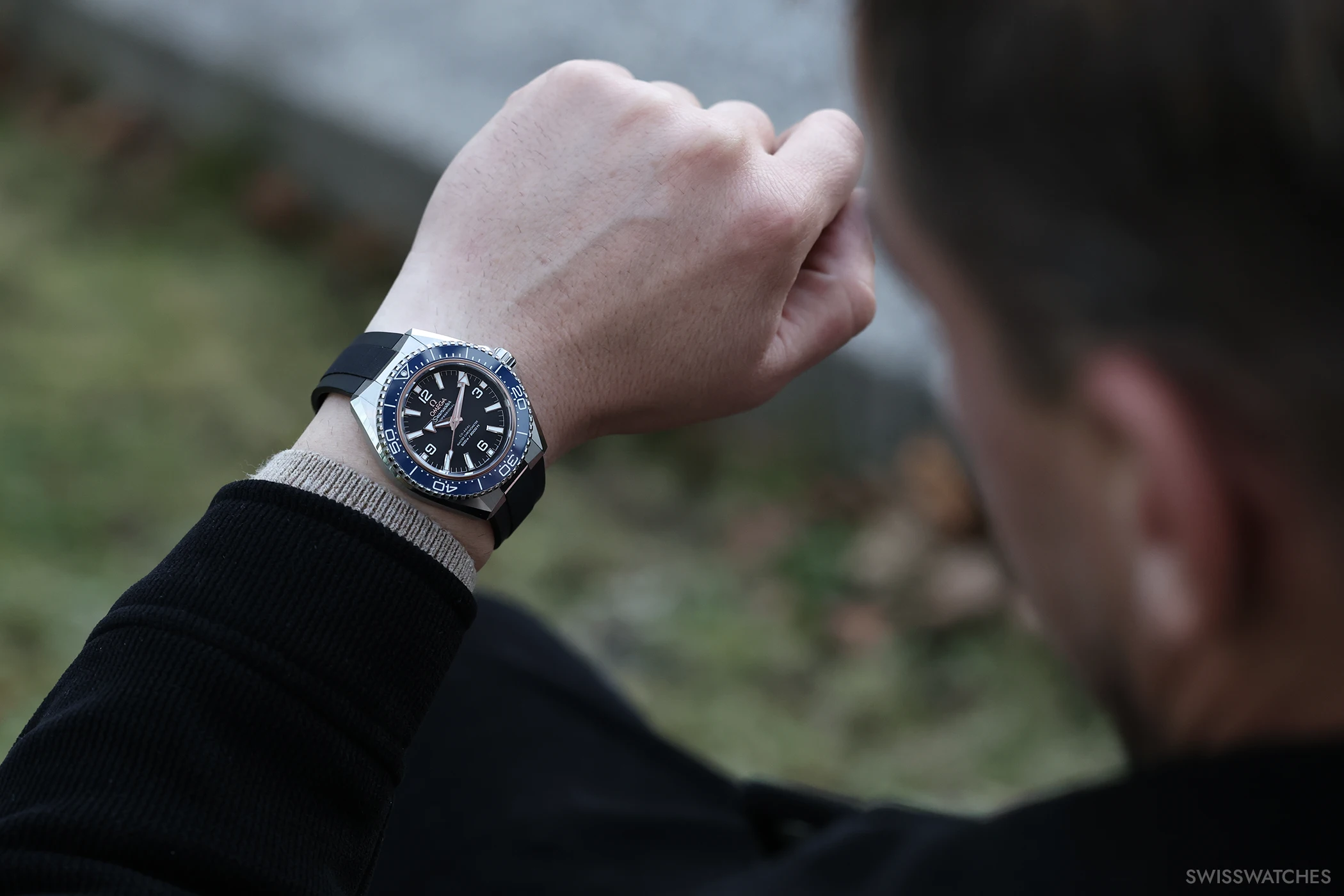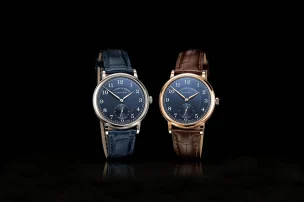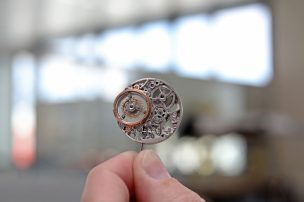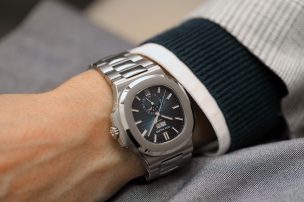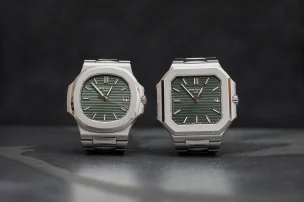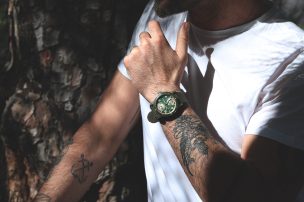
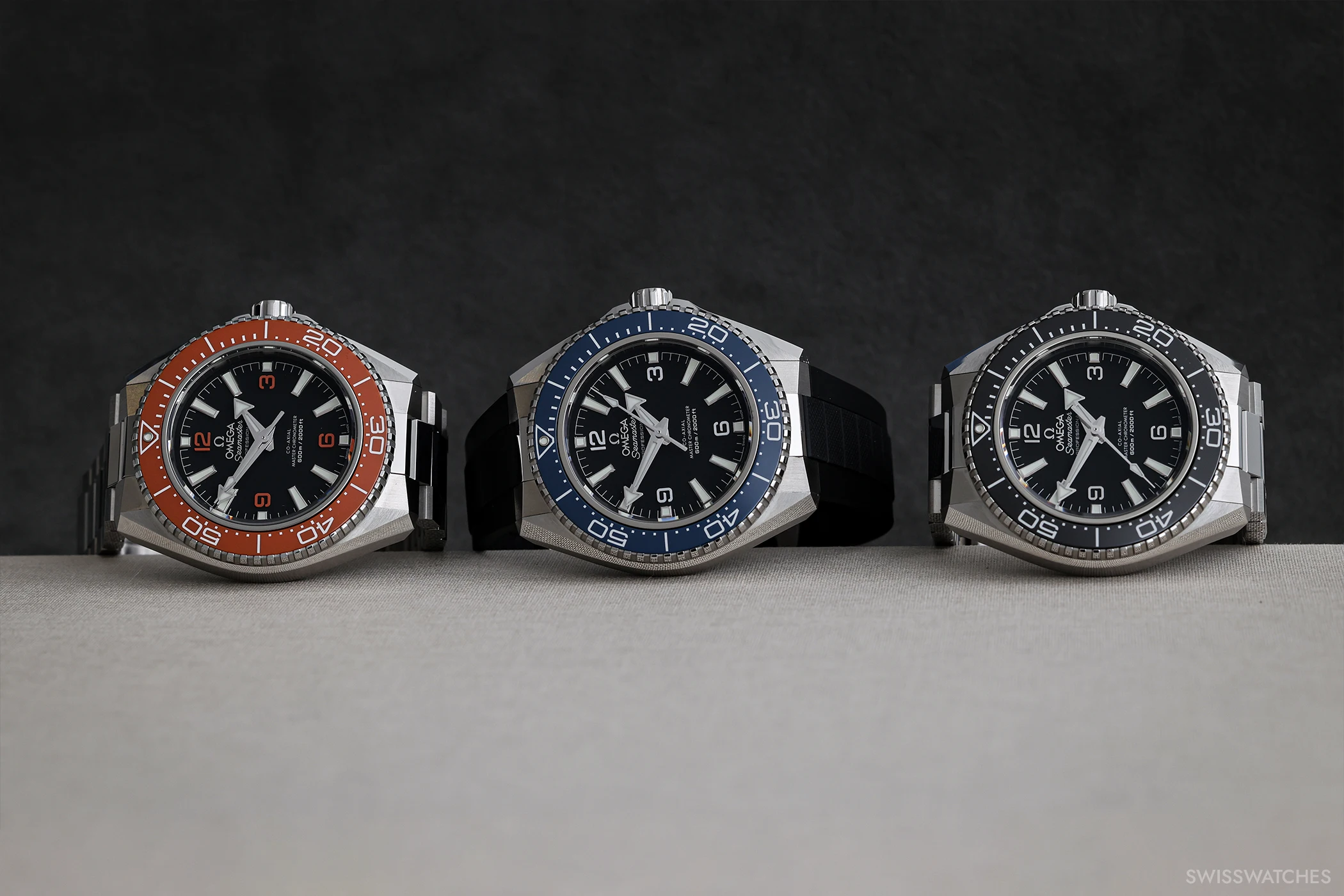
Omega Presents the Fourth Generation of the Seamaster Planet Ocean – With a Redesigned Case and Bracelet
Twenty years after the introduction of the Planet Ocean, Omega now unveils the fourth generation of the model – a comprehensive redesign created to meet the expectations of the present day. To mark the launch, the new generation is introduced in three variants, each distinguished by differing executions of the bezel, numerals, and bracelet. Yet given the noticeable technical refinements to the case and bracelet architecture that Omega has implemented for this fourth generation, one question inevitably arises: how does the new Omega Seamaster Planet Ocean wear on the wrist? We have already had the opportunity to experience the new models first-hand – and in this article, we share our impressions of Omega’s latest evolution of the iconic line.
An Introduction to the History of the Omega Seamaster Planet Ocean
Launched in 2005, the Omega Seamaster Planet Ocean was positioned within Omega’s premium segment – larger, and in many cases more technically advanced, than the classic Bond-associated Seamaster 300M. The first Planet Ocean models of 2005 drew aesthetic inspiration from the Seamaster 300 of the late 1950s and early 1960s. Offered in the original case sizes of 42 mm and 45.5 mm, they doubled the water resistance to an impressive 600 metres. Design-wise, the Planet Ocean adopted signature traits such as the highly legible black dial with Arabic quarter-hour numerals, broad arrow hands, and a diver’s bezel with an internal minute scale.
In 2009, the transitional model marking the move towards the second generation of the Omega Seamaster Planet Ocean – the Limited Edition Seamaster Planet Ocean Liquidmetal Ref. 222.30.42.20.01.001 – introduced a major update to the line. The aluminium bezel insert was replaced with a ceramic one, the matte dial gave way to glossy variants, and for the first time, Liquidmetal components were used. This amorphous alloy provided superior scratch resistance and lasting structural stability. Building on this limited edition, Omega subsequently launched the full second generation of the Planet Ocean, incorporating these innovations – including ceramic bezels and glossy dials – into regular production. Added features included sapphire casebacks and the Calibre 8500 with a silicon balance spring (Si14), significantly enhancing magnetic resistance.
The third generation of the Omega Seamaster Planet Ocean followed in 2016. With this release, Omega equipped the Planet Ocean with Co-Axial Master Chronometer calibres – the highest Swiss standard of precision, performance, and magnetic resistance. The collection also introduced new case sizes, refined and slimmer proportions, and aesthetic updates such as the use of Sedna Gold and a ceramic bezel featuring rubber details. That same year, the Planet Ocean Deep Black joined the collection – four models crafted entirely from ceramic, each capable of withstanding pressure at depths of up to 600 metres. In 2022, Omega expanded the Planet Ocean line with the Ultra Deep, a watch water-resistant to an astonishing 6,000 metres and compliant with the ISO 6425 standard for saturation diving.
Twenty years after its debut, the Omega Seamaster Planet Ocean now undergoes another significant design evolution with the introduction of its fourth generation. Here’s a closer look at the new models in detail.
How Does the Fourth Generation of the Omega Seamaster Planet Ocean Wear on the Wrist?
Once on the wrist, one thing becomes immediately apparent: for a Omega Seamaster Planet Ocean, it sits surprisingly flat. The short lugs make the 42 mm case appear noticeably smaller than the dimensions suggest – making this fourth generation one of the rare Planet Ocean models that pairs just as harmoniously with business attire as it does with evening wear.
This impression can be attributed primarily to two key changes Omega has made with this generation. Firstly, the case – composed of a main body and an inner titanium ring – has been reworked with sharper lines and more defined edges. In essence, however, it still follows the familiar construction that has characterised the collection since its beginnings. Omega enthusiasts will recognise the characteristic lyre-shaped lugs, the bevel that widens towards the tips, the longitudinal brushing along the case flanks, and the seamlessly integrated lugs whose vertical brushing and polished centre section continue into the case. Yet every element of the case is now noticeably crisper and more angular, giving the watch a distinctly more contemporary appearance.
The Redesign of the Case and Bracelet
The result of this revision is a Omega Seamaster Planet Ocean with a 42 mm case diameter – matching the size of the original 2005 model. However, the fourth generation is not only narrower but also noticeably thinner than previous iterations of the Omega Seamaster Planet Ocean. This reduction in height is due not only to the redesigned case and bezel but also to the use of a flatter sapphire crystal and a solid caseback. Compared to the 16.1 mm thickness of the standard third-generation models, the new version measures 13.79 mm in height.
Another distinctive feature of the case is the removal of the helium escape valve that was previously positioned on the case side at 10 o’clock – a significant step, as it had been a defining element of the collection for almost twenty years. Originally designed for saturation divers, this manually operated valve allowed helium that had accumulated inside the watch to escape during decompression, thereby preventing damage to the gaskets or crystal. Omega’s ability to dispense with it in the fourth generation stems from the experience gained during the development of the Planet Ocean Ultra Deep (2019). Its construction incorporates an inner ring made of titanium, which forms an integral part of the case structure and provides markedly greater structural rigidity. The same principle is now applied to the new Planet Ocean, enabling water resistance to 600 metres – without the need for a helium escape valve.
Omega has also redesigned the bracelets as part of the case revision. They are now more seamlessly integrated into the case and feature flat links with brushed outer rows and a polished centre row. Compared with the bracelets of earlier generations, they are slimmer and visually more refined, though they feel somewhat lighter and less substantial on the wrist. The bracelets offer six levels of adjustment, include a folding clasp, and come with an additional diver’s extension.
As mentioned earlier, the models of the fourth generation feature screw-down casebacks made of Grade 5 titanium instead of sapphire crystal. According to Omega, this construction reduces the overall weight, enhances structural rigidity, and contributes to the slimmer profile. The caseback displays a wave-patterned edge, engravings reading PLANET OCEAN and SEAMASTER, the water-resistance specification, and the collection’s signature seahorse emblem at the centre.
The Bezels as a Key Distinguishing Feature
Moving on to the bezel of the fourth generation – a component that, according to Omega, has also been revised and serves as the main point of distinction between the models. All versions feature a unidirectional timing bezel with a 0–60-minute scale, offering precise, high-quality rotation with a clear audible click. The ridges are polished, while the recesses are satin-finished, providing a firm grip and ensuring that the bezel can be easily operated without protruding beyond the case profile.
For the initial launch, the bezel is available in three configurations: one with a black ceramic insert and white enamel scale; another with a blue ceramic insert and white enamel scale; and a third with an orange ceramic insert paired with a white hybrid-ceramic scale. The orange variant, in particular, stands out as the most striking execution of the current line. Up until 2014, orange bezels were made of aluminium, before Omega introduced its first orange ceramic bezel on the platinum Planet Ocean GMT in that same year. The orange hue holds a special place within the collection, having been a signature colour of the Planet Ocean since its inception and closely associated with vintage Seamaster models.
The Dials
All versions of the fourth-generation Omega Seamaster Planet Ocean feature a matte black dial that can appear dark grey depending on the light. Each is fitted with the characteristic broad arrow-shaped hands and applied hour markers, both sharply executed and filled with Super-LumiNova to ensure legibility in low light. Two changes set the new dial apart. Omega has omitted the date window, resulting in a more restrained and balanced layout.
In addition, the Arabic numerals have been redesigned. Their typography takes cues from the first Omega Seamaster Planet Ocean models of 2005 while aligning more closely with the geometry of the updated case. The numerals are now open and more angular, providing a clearer link to the watch’s overall design language. The colour of the numerals differs by version: orange on the model with the orange bezel, matte white on the blue version, and rhodium-plated on the black models. The applied Omega logo is rhodium-plated across all variants, while the printed text remains white.
The Movement of the Fourth Generation
Finally, it is worth looking beneath the solid caseback to the automatic Co-Axial Master Chronometer Calibre 8912, which provides a power reserve of 60 hours. The calibre, also used in the Ultra Deep, carries Omega’s Master Chronometer certification. This designation, introduced in 2015 with the establishment of METAS (the Swiss Federal Institute of Metrology), supplements the certification already granted by the Official Swiss Chronometer Testing Institute (COSC).
To qualify as a Master Chronometer, a movement must pass eight individual tests conducted by METAS, assessing both the uncased calibre and the completed watch. These tests evaluate magnetic resistance, water resistance, and precision, among other criteria. Watches that meet the standard must demonstrate antimagnetic performance up to 15,000 gauss, water resistance of at least 200 metres, and a daily deviation within 0 to +5 seconds – a level of accuracy five seconds tighter than the COSC tolerance of −4 to +6 seconds per day.
Conclusion
When Omega introduced the Seamaster Planet Ocean in 2005, it positioned the line within the brand’s premium segment – larger and, in many respects, more technically advanced than the classic Bond-associated Seamaster 300M. With its original 42 mm case size, the Omega Seamster Planet Ocean was conceived as a versatile diver’s watch that could compete directly with models from Rolex and Breitling. With the fourth generation, Omega now revisits the original purpose of the collection. By returning to the versatile 42 mm case diameter and omitting both the date window and helium escape valve, the new Planet Ocean appears to reaffirm its role as a robust yet wearable everyday alternative to the Seamaster Diver 300 – while maintaining its depth rating of 600 metres. At the same time, the model presents itself as a smaller, more wearable counterpart to the Ultra Deep, with which it now shares a closer visual relationship.
The differences also extend to the bracelet and strap options. The version with the orange bezel is available either on a stainless-steel bracelet or on a black or orange rubber strap. The blue and black models, meanwhile, can be paired with a stainless-steel bracelet or a black rubber strap.
Prices for the new Omega Seamaster Planet Ocean models of the fourth generation range from EUR 8,300 to EUR 9,200, depending on the configuration. The versions with a black or blue ceramic bezel are priced at EUR 8,300 when fitted with a black rubber strap, or EUR 9,000 on a stainless-steel bracelet. The model featuring the orange ceramic bezel is positioned slightly higher in the range, retailing for EUR 8,600 with either a black or orange rubber strap, or EUR 9,200 with a stainless-steel bracelet.


